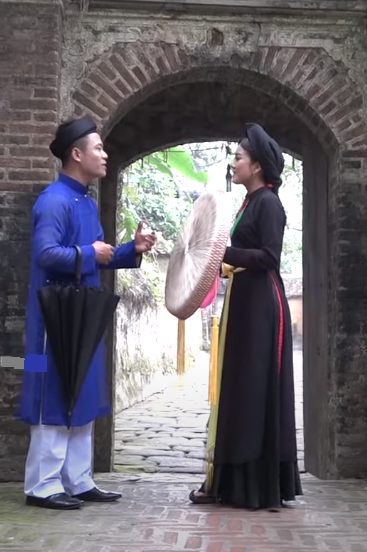Bài học cùng chủ đề
Báo cáo học liệu
Mua học liệu
Mua học liệu:
-
Số dư ví của bạn: 0 coin - 0 Xu
-
Nếu mua học liệu này bạn sẽ bị trừ: 2 coin\Xu
Để nhận Coin\Xu, bạn có thể:

Practice SVIP
Complete the passage with the correct forms of the words in brackets.

Shakira - A Star In Two Worlds
Shakira, who was born in Columbia, is one of the best pop stars to come from Latin America. She had an (interest) childhood. Her mother was Colombian and her father was Lebanese, so she listened to a lot of different styles of music. As a result, her own music is very (origin). Shakira is also (usual) because she records songs both in Spanish and English. Her first album Magia was released in 1991. It wasn't as (success) as she hoped, so she changed careers for a while and took part in Colombia's biggest TV soap opera. This made her (fame) and sales of her second album were much better. The album sold millions of copies in Latin America, Spain, and the USA. Since then, Shakira has become an international star.
Look, listen and choose the correct answer.

What kind of singing is it?
Quan Họ - Typical Northern Vietnamese music
It is hard to talk about the origin of Quan Họ singing, but it was first recorded in the 13th century. Quan Họ is a singing battle where “liền chị” (female singers) sing “câu ra” (a challenge phrase), then “liền anh” (male singers) will respond by selecting and singing “câu đối” (a matching phrase). The order will be reserved in the next time.
Traditional Quan Họ was unaccompanied by instruments but only voices of singers to compose rhythm. Quan Họ performances today are accompanied by some musical instruments, such as monochord or bamboo flute, etc.
Themes of most of the songs are love songs with romantic and sentimental lyrics which have been passed on by word of mouth.
Quan Họ songs possess the spirit of local people and help tighten bonds among villages. Quan Họ singing is an old Vietnamese type of art that needs preserving.
Read and fill in the blank with ONE word or number from the passage.
1. When did Quan Họ first appear?
It first appeared in the th century.
Quan Họ - Typical Northern Vietnamese music
It is hard to talk about the origin of Quan Họ singing, but it was first recorded in the 13th century. Quan Họ is a singing battle where “liền chị” (female singers) sing “câu ra” (a challenge phrase), then “liền anh” (male singers) will respond by selecting and singing “câu đối” (a matching phrase). The order will be reserved in the next time.
Traditional Quan Họ was unaccompanied by instruments but only voices of singers to compose rhythm. Quan Họ performances today are accompanied by some musical instruments, such as monochord or bamboo flute, etc.
Themes of most of the songs are love songs with romantic and sentimental lyrics which have been passed on by word of mouth.
Quan Họ songs possess the spirit of local people and help tighten bonds among villages. Quan Họ singing is an old Vietnamese type of art that needs preserving.
Read and fill in the blank with ONE word or number from the passage.
2. Which parts of the lyric in Quan Họ does the singers take responsibility for?
singers sing “câu ra” (a challenge phrase), and singers will respond by selecting and singing “câu đối” (a matching phrase).
Quan Họ - Typical Northern Vietnamese music
It is hard to talk about the origin of Quan Họ singing, but it was first recorded in the 13th century. Quan Họ is a singing battle where “liền chị” (female singers) sing “câu ra” (a challenge phrase), then “liền anh” (male singers) will respond by selecting and singing “câu đối” (a matching phrase). The order will be reserved in the next time.
Traditional Quan Họ was unaccompanied by instruments but only voices of singers to compose rhythm. Quan Họ performances today are accompanied by some musical instruments, such as monochord or bamboo flute, etc.
Themes of most of the songs are love songs with romantic and sentimental lyrics which have been passed on by word of mouth.
Quan Họ songs possess the spirit of local people and help tighten bonds among villages. Quan Họ singing is an old Vietnamese type of art that needs preserving.
Read and fill in the blank with ONE word or number from the passage.
3. How is music (rhythm) created in Quan Họ singing?
It is created by of singers and today combined with some musical .
Quan Họ - Typical Northern Vietnamese music
It is hard to talk about the origin of Quan Họ singing, but it was first recorded in the 13th century. Quan Họ is a singing battle where “liền chị” (female singers) sing “câu ra” (a challenge phrase), then “liền anh” (male singers) will respond by selecting and singing “câu đối” (a matching phrase). The order will be reserved in the next time.
Traditional Quan Họ was unaccompanied by instruments but only voices of singers to compose rhythm. Quan Họ performances today are accompanied by some musical instruments, such as monochord or bamboo flute, etc.
Themes of most of the songs are love songs with romantic and sentimental lyrics which have been passed on by word of mouth.
Quan Họ songs possess the spirit of local people and help tighten bonds among villages. Quan Họ singing is an old Vietnamese type of art that needs preserving.
Read and choose the correct answer.
4. How do Quan Họ singers pass on the songs?
Quan Họ - Typical Northern Vietnamese music
It is hard to talk about the origin of Quan Họ singing, but it was first recorded in the 13th century. Quan Họ is a singing battle where “liền chị” (female singers) sing “câu ra” (a challenge phrase), then “liền anh” (male singers) will respond by selecting and singing “câu đối” (a matching phrase). The order will be reserved in the next time.
Traditional Quan Họ was unaccompanied by instruments but only voices of singers to compose rhythm. Quan Họ performances today are accompanied by some musical instruments, such as monochord or bamboo flute, etc.
Themes of most of the songs are love songs with romantic and sentimental lyrics which have been passed on by word of mouth.
Quan Họ songs possess the spirit of local people and help tighten bonds among villages. Quan Họ singing is an old Vietnamese type of art that needs preserving.
Read and choose the correct answer.
5. What does "sentimental" mean?
Quan Họ - Typical Northern Vietnamese music
It is hard to talk about the origin of Quan Họ singing, but it was first recorded in the 13th century. Quan Họ is a singing battle where “liền chị” (female singers) sing “câu ra” (a challenge phrase), then “liền anh” (male singers) will respond by selecting and singing “câu đối” (a matching phrase). The order will be reserved in the next time.
Traditional Quan Họ was unaccompanied by instruments but only voices of singers to compose rhythm. Quan Họ performances today are accompanied by some musical instruments, such as monochord or bamboo flute, etc.
Themes of most of the songs are love songs with romantic and sentimental lyrics which have been passed on by word of mouth.
Quan Họ songs possess the spirit of local people and help tighten bonds among villages. Quan Họ singing is an old Vietnamese type of art that needs preserving.
Read and choose the correct answer.
6. What is NOT TRUE about Quan Họ singing?
Choose the traditional Vietnamese music.
Match the picture with the name of the program.



America's Got Talent
Originating in 2006, America's Got Talent (also known as AGT) is an American reality television series on NBC. The show was developed with the help of Simon Cowell but due to Idol and Fox obligations, he has never judged. The show is a talent competition which has no restrictions to age or act, with the main focus on whether or not it was entertaining. It is divided into three main rounds. The acts first compete on stage in front of an audience and the three or four judges. Each judge has a loud 'X' buzzer which they can press if they feel an act is not meeting expectations. If an act gets all the judges to buzz, it is immediately over and they are out of the competition. These remain active throughout the show, but during later rounds frequently get used.
It starts off with the audition week held across the country where acts have roughly 90 seconds to impress the judges and an area audience. Following each act, the judges quickly vote and based on majority rules decide if the contestants go to the next round or are cut on the spot.
Following the audition week, the show and accepted acts move to Vegas where the acts perform again, only this time in front of only the judges and no audience. Following Vegas week, the judges cut the competition aggressively to 48 acts to move onto the next, the most important round. The 48 acts chosen go onto the live quarter-finals in various cities to compete on live television for the audience votes as the power now shifts away from the judges. There are 4 quarter finals with 12 acts performing each week (4 advance each), followed by two semifinals (4 advance each) followed by the final where the winner is declared. The grand prize winner will receive one million US dollars and a chance for their own show in Vegas.
Read the passage and choose the correct answer.
1. In the first paragraph, which is NOT true about America's Got Talent?
America's Got Talent
Originating in 2006, America's Got Talent (also known as AGT) is an American reality television series on NBC. The show was developed with the help of Simon Cowell but due to Idol and Fox obligations, he has never judged. The show is a talent competition which has no restrictions to age or act, with the main focus on whether or not it was entertaining. It is divided into three main rounds. The acts first compete on stage in front of an audience and the three or four judges. Each judge has a loud 'X' buzzer which they can press if they feel an act is not meeting expectations. If an act gets all the judges to buzz, it is immediately over and they are out of the competition. These remain active throughout the show, but during later rounds frequently get used.
It starts off with the audition week held across the country where acts have roughly 90 seconds to impress the judges and an area audience. Following each act, the judges quickly vote and based on majority rules decide if the contestants go to the next round or are cut on the spot.
Following the audition week, the show and accepted acts move to Vegas where the acts perform again, only this time in front of only the judges and no audience. Following Vegas week, the judges cut the competition aggressively to 48 acts to move onto the next, the most important round. The 48 acts chosen go onto the live quarter-finals in various cities to compete on live television for the audience votes as the power now shifts away from the judges. There are 4 quarter finals with 12 acts performing each week (4 advance each), followed by two semifinals (4 advance each) followed by the final where the winner is declared. The grand prize winner will receive one million US dollars and a chance for their own show in Vegas.
Read the passage and choose the correct answer.
2. The word “on the spot” in the second paragraph is closest in meaning to _______.
America's Got Talent
Originating in 2006, America's Got Talent (also known as AGT) is an American reality television series on NBC. The show was developed with the help of Simon Cowell but due to Idol and Fox obligations, he has never judged. The show is a talent competition which has no restrictions to age or act, with the main focus on whether or not it was entertaining. It is divided into three main rounds. The acts first compete on stage in front of an audience and the three or four judges. Each judge has a loud 'X' buzzer which they can press if they feel an act is not meeting expectations. If an act gets all the judges to buzz, it is immediately over and they are out of the competition. These remain active throughout the show, but during later rounds frequently get used.
It starts off with the audition week held across the country where acts have roughly 90 seconds to impress the judges and an area audience. Following each act, the judges quickly vote and based on majority rules decide if the contestants go to the next round or are cut on the spot.
Following the audition week, the show and accepted acts move to Vegas where the acts perform again, only this time in front of only the judges and no audience. Following Vegas week, the judges cut the competition aggressively to 48 acts to move onto the next, the most important round. The 48 acts chosen go onto the live quarter-finals in various cities to compete on live television for the audience votes as the power now shifts away from the judges. There are 4 quarter finals with 12 acts performing each week (4 advance each), followed by two semifinals (4 advance each) followed by the final where the winner is declared. The grand prize winner will receive one million US dollars and a chance for their own show in Vegas.
Read the passage and choose the correct answer.
3. After the Vegas week, how many performances are left in the competition?
America's Got Talent
Originating in 2006, America's Got Talent (also known as AGT) is an American reality television series on NBC. The show was developed with the help of Simon Cowell but due to Idol and Fox obligations, he has never judged. The show is a talent competition which has no restrictions to age or act, with the main focus on whether or not it was entertaining. It is divided into three main rounds. The acts first compete on stage in front of an audience and the three or four judges. Each judge has a loud 'X' buzzer which they can press if they feel an act is not meeting expectations. If an act gets all the judges to buzz, it is immediately over and they are out of the competition. These remain active throughout the show, but during later rounds frequently get used.
It starts off with the audition week held across the country where acts have roughly 90 seconds to impress the judges and an area audience. Following each act, the judges quickly vote and based on majority rules decide if the contestants go to the next round or are cut on the spot.
Following the audition week, the show and accepted acts move to Vegas where the acts perform again, only this time in front of only the judges and no audience. Following Vegas week, the judges cut the competition aggressively to 48 acts to move onto the next, the most important round. The 48 acts chosen go onto the live quarter-finals in various cities to compete on live television for the audience votes as the power now shifts away from the judges. There are 4 quarter finals with 12 acts performing each week (4 advance each), followed by two semifinals (4 advance each) followed by the final where the winner is declared. The grand prize winner will receive one million US dollars and a chance for their own show in Vegas.
Read the passage and choose the correct answer.
4. According to the last paragraph, there are _____ live quarter finals, _____ semifinals, and _____ final.
America's Got Talent
Originating in 2006, America's Got Talent (also known as AGT) is an American reality television series on NBC. The show was developed with the help of Simon Cowell but due to Idol and Fox obligations, he has never judged. The show is a talent competition which has no restrictions to age or act, with the main focus on whether or not it was entertaining. It is divided into three main rounds. The acts first compete on stage in front of an audience and the three or four judges. Each judge has a loud 'X' buzzer which they can press if they feel an act is not meeting expectations. If an act gets all the judges to buzz, it is immediately over and they are out of the competition. These remain active throughout the show, but during later rounds frequently get used.
It starts off with the audition week held across the country where acts have roughly 90 seconds to impress the judges and an area audience. Following each act, the judges quickly vote and based on majority rules decide if the contestants go to the next round or are cut on the spot.
Following the audition week, the show and accepted acts move to Vegas where the acts perform again, only this time in front of only the judges and no audience. Following Vegas week, the judges cut the competition aggressively to 48 acts to move onto the next, the most important round. The 48 acts chosen go onto the live quarter-finals in various cities to compete on live television for the audience votes as the power now shifts away from the judges. There are 4 quarter finals with 12 acts performing each week (4 advance each), followed by two semifinals (4 advance each) followed by the final where the winner is declared. The grand prize winner will receive one million US dollars and a chance for their own show in Vegas.
Read the passage and answer the question.
5. What will the winner receive in this show?


Bạn có thể đánh giá bài học này ở đây